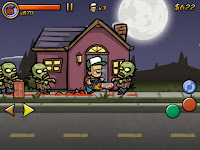Remember back when you were a kid and you were the first to get that hot new toy all the other kids lusted after? Instant popularity was yours as soon as you walked into the classroom; everyone wanted to see it, touch it, play with it, ask you about it. If you walk into the office with an Apple iPad, the exact same thing happens. Unfortunately, fame thus received as fleeting as it was in your youth, and soon enough you are just an average schmoe again, except with a useless plastic toy to your name. The
Apple iPad is like that too.
I received an iPad as a gift. I'd like to say -especially after my scathing preview a few months back- that had I not gotten the tablet as a present I never would have owned one, but in all honesty I cannot. Likely I would have waited a year before I bought it, but the allure of tablet computing is difficult for a geek to resist, even those of us who recognize the platform's disadvantages ahead of time. Nonetheless, despite having nothing more invested in the product than appreciation towards the person who had gifted it to me, I endeavored to find utility for the device. For the past two weeks, it has gone almost everywhere I have gone, and where I might otherwise have used a computer or hand-held, I used the iPad. Surely somewhere in all those tasks the iPad would prove its worth.
 |
| The iPad has a glossy screen |
People who have not used an iPad might find this an unduly negative start to a review. After all, the tablet is some impressive hardware. From it's glossy ten-inch screen to its speedy 1 GHz
Apple A4 processor, it is stylish and powerful. Advocates point to the more than 100,000 applications available as indications of its flexibility and adaptability to almost every usage scenario. Desktops (and even laptops) are too cumbersome, hand-held devices are too limited; surely a tablet PC is the optimal solution.
But the sad fact is, the iPad is not the solution. It has the technical capability but its form factor is its greatest weakness. True, it can perform most tasks you might otherwise turn to a laptop or desktop computer, but its limitations quickly become evident. Similarly, it has the portability of a hand-held, but -four times larger- not the convenience. It is not the revolutionary new computing paradigm promised by Apple. It is a toy that, at best, has a few niche applications it might be ideal for but otherwise fails to better its competitors in any way.
 |
| The on-screen keyboard |
One of the first uses I put the iPad to was e-mail; jumping between offices, I found it necessary to keep in contact with my peers in multiple locations. Normally, I might jot down a few terse messages on my iPhone until I could reach a "proper" computer where I could type out a detailed message, but surely the iPad -with its bigger screen and keyboard- would allow me to write out those longer e-mails on the road. And, true, the capability was there, but after a few messages I found myself reverting to my old habits. The iPad on-screen keyboard is horrid, not only due to its lack of tactile feedback but also for its layout; numbers and commonly-used punctuation are hidden layers deep which greatly impede typing speed. Before too long, e-mail sent from my iPad started to assume the usual Frankensteinian diction common to any e-mail I send from a portable device. As far as e-mail was concerned, I might as well have been using the iPhone; at least that had the advantage in size.
 |
| Safari lacks many features | |
But surely as a web-browser the iPad would be a superior experience to any smartphone? Certainly its smaller screen improved on readability, although I was still frequently zooming in to read anything but the headlines. Fat fingers always made clicking links an exercise in frustration, and the limitations of the browser (no Flash, limited javascript, no add-ons) meant that many websites did not function as expected. Furthermore, the problems with the keyboard again came into effect; these days I do more than simply surf the web and ingest content. I like to give back with stories or comments of my own and typing anything of length on the iPad keyboard is just not an option.
 |
| iBook is pretty but not feature-rich |
A much touted feature of the iPad was its use as an e-book reader. In this I found some success. The iBook application is gorgeous, although e-book fanatics might find fault with the too-bright screen and fonts. But I found the iPad's form-factor to be uncomfortable for extended periods of reading. It's just a bit too large to comfortably curl up around and -even at only 1.5 pounds- after half an hour of holding the tablet up I started to feel it in my wrist. The Kindle -roughly two-thirds the size of the iPad- is the ideal dimensions for reading e-books; the iPad is not. Nonetheless, there was one area I found the iPad to be superior: reading multiple-column text or PDFs. These are too big for hand-helds and can't be comfortably read on a laptop; the iPad was the perfect platform for this format. Unfortunately, the iPad didn't come with a built-in PDF reader, requiring me to purchase an application separately.
Similarly, the iPad has limited success as a portable media device. It is terrible as a music player; although it has all the features of Apple's iPhone or iPod Touch music players, its form factor completely negates its usability in this area; you can't stick the iPad in your pocket and go out for a brisk jog. On the other hand, it plays videos fairly well and -despite initial worries- I only came across a handful of websites where I could not stream the video from the Internet (Hulu.Com is, of course, the most notable exception). Still, I have to wonder at the utility of this feature; whenever I was traveling, watching video was the last thing I wanted to do, and when I was at home the better option was always to watch the video on the HDTV or big-screen monitor.
 |
| Zombieville USA on the iPad is a kick-ass game |
Of course, there are always the 100,000 other applications you can use. Some are quite nice, but -again- all are limited by the platform itself. The games tend to be fairly shallow and lack in variety; they are fun for short periods of time but you aren't going to keep at these games for more than fifteen minutes before you tire of them. As for productivity applications, well, do I have to bring up the input limitations again? The keyboard is terrible for anything beyond the shortest of comments and the touch-interface will hardly replace a mouse for accuracy. Nor do the limitations of the OS improve things; no multi-tasking and no easy way to move files on or off the platform mean it will never replace a dedicated workstation.
So what's the final verdict? Well, if you ask me, it's a cute toy, but even its most dedicated fans will have to admit that it just can't replace the computing platforms already available. For all its versatility, users will still want to keep a hand-held device
and a dedicated computer around for their day-to-day work. The iPad is too big to replace the former, and too limited in functionality to replace the former. So why should anyone ever buy one?












































